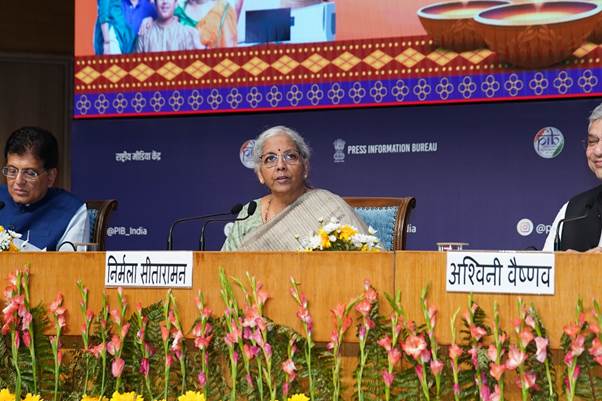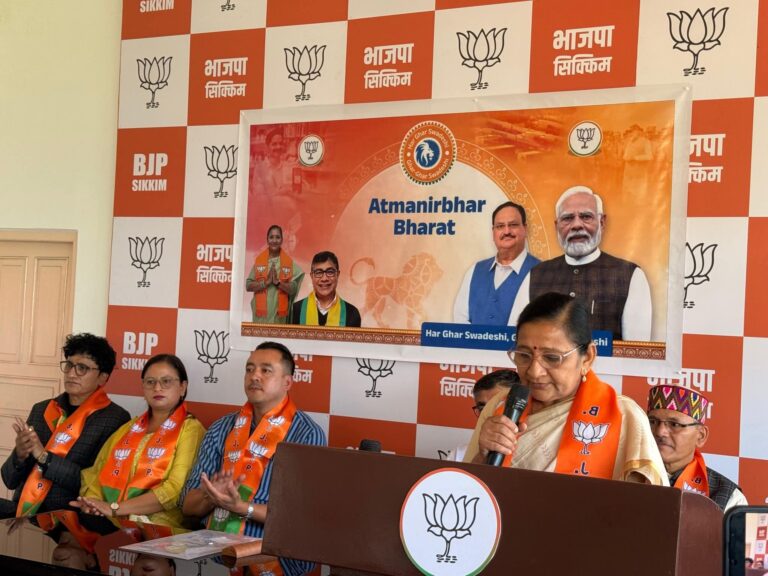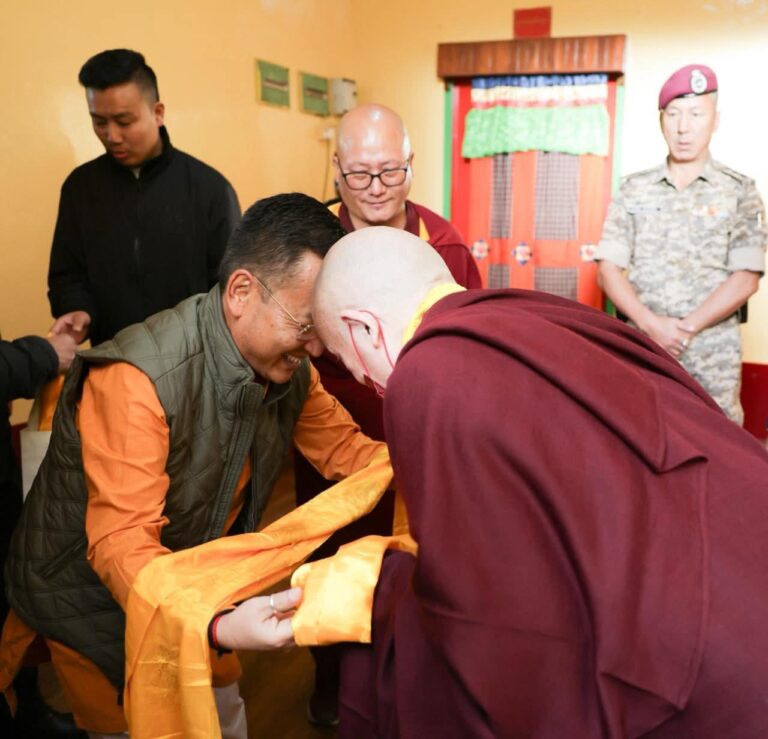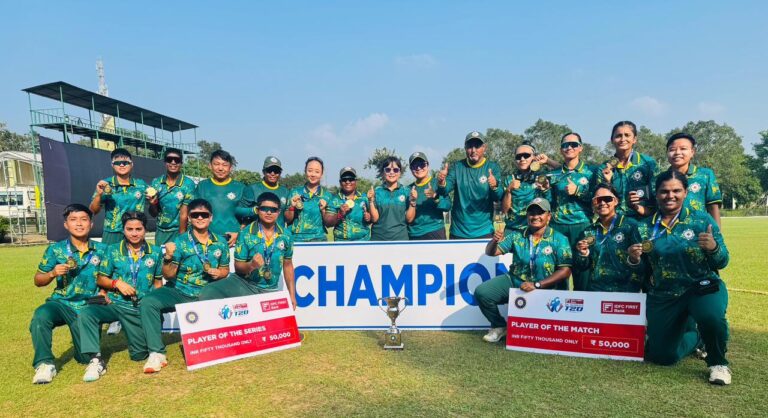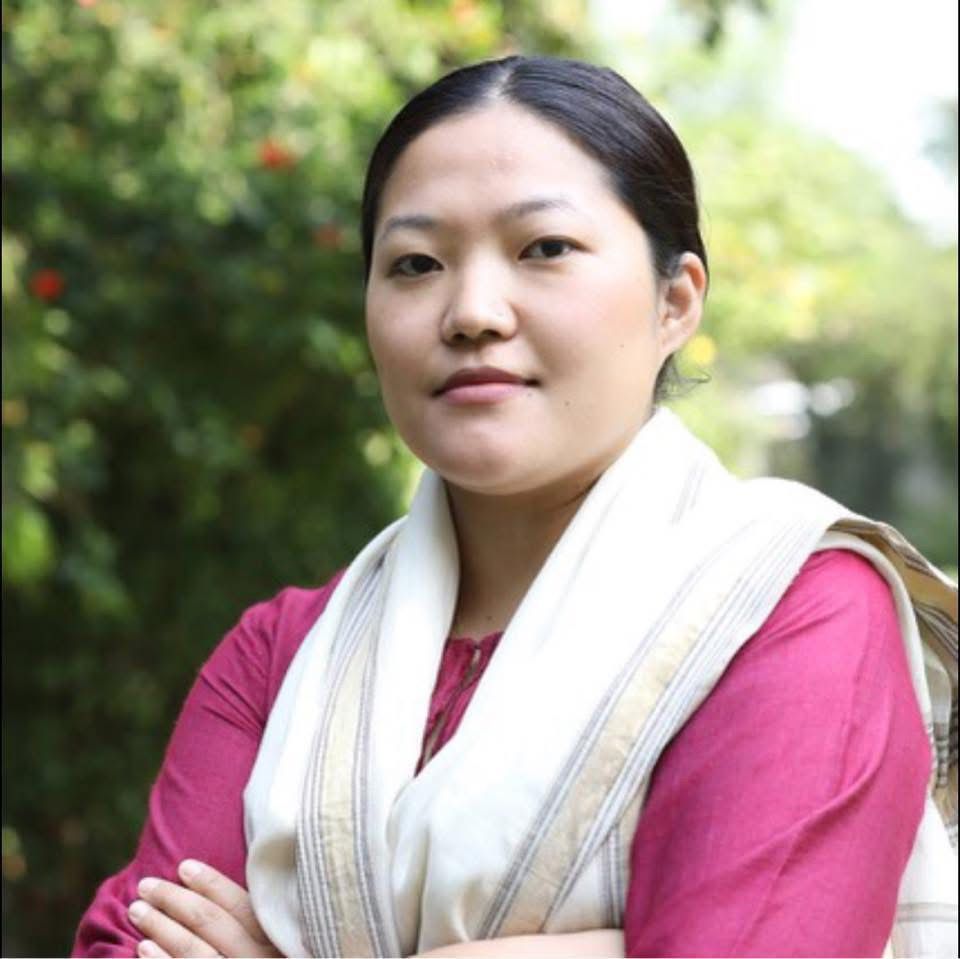
Komal Chamling,Incharge Womens’ wing SDF on all that SDF Government has done for12 Left Out Communities
Gangtok,:14th Sept : Komal Chamling,budding politician & Incharge SDF Womens’wing highlighting the 8 major achievements of the then SDF Govt to get Tribal Status for 12 communities of State,has said, ‘The SKM party has repeatedly claimed that the SDF government lacked seriousness in pursuing tribal status for the 12 Left Out Communities of Sikkim. However, such claims have no foundation on facts and are nothing more than examples of SKM’s strategy of “blame the previous government” to hide its own failure to deliver its promises to the public. The comprehensive and sustained efforts made by the SDF government for the left out communities under the leadership of Pawan Chamling speaks for itself. The following is a detailed account of the initiatives undertaken during the SDF regime to advance this cause:
1. Sinha Committee (2005)
The Government of Sikkim constituted a committee headed by Professor A.C. Sinha, Dean of Sociology, NEHU, to document the ethnographic profiles of seven communities: Rai, Yakha (Sunwar), Mangar, Gurung, Bhujel, Dewan, and Jogi. The committee submitted its report in May 2005, and its recommendations were forwarded to the Government of India for further consideration.2. CRESP / Burman Commission (2008)
Following the Sinha Committee report, the Government of Sikkim set up the Commission for the Review of Social and Environmental Sector Policies, Plans, and Programs (CRESP) under the chairmanship of Prof. B.K. Roy Burman, via Notification No. 73/Home/2005 dated 1st December 2005.
The Executive Report was submitted on 31st March 2008, with the full report submitted on 30th September 2008. The commission included respected social scientists such as Prof. A.K. Danda (President, Indian Anthropological Society). It recommended the inclusion of the Left Out Communities under the Scheduled Tribes category and proposed increasing the number of seats in the Sikkim Legislative Assembly from 32 to 40.3. Approval and Resolutions in the State Cabinet and Sikkim Legislative Assembly
• 24th April 2008: The State Cabinet approved the Burman Commission Report.
• 10th June 2008: The Sikkim Legislative Assembly passed a resolution supporting the report.
• 16th September 2010: Another resolution was passed in the Assembly seeking early implementation of the Burman Report and its submission to the Government of India.
• 30th January 2013: The Assembly passed a resolution advocating for equal treatment among all Sikkimese communities in the categorization of Scheduled Tribes.4. Ethnographic Report (2012)
A comprehensive ethnographic report titled “Proposal for Inclusion of Remaining Left Out Communities in the List of Scheduled Tribes of Sikkim” was completed, strengthening the technical and cultural basis for their inclusion.5.Committee formed by Ministry of Tribal Affairs (2016)
As a result of the sustained efforts by the SDF government, the Ministry of Tribal Affairs, GoI, constituted a committee vide No.12016/6/2001-C&LM-I(Pt) dated 2nd April 2016, headed by Ashok Pal, Joint Secretary, Ministry of Tribal Affairs to examine and recommend regarding the granting of ST status to the 11 communities – Bhujel, Gurung, Mangar, Newar, Jogi, Khas, Rai, Sunwar, Thami, Yakha (Dewan) and Dhimal. This development marked a significant milestone and a major step forward in the long-standing demand for ST status by the Left Out Communities of Sikkim.6. Engagement with Central Government (2017)
From 10th to 14th December 2017, a delegation of 43 members from EIECOS visited New Delhi to meet with, Union Minister of Tribal Affairs Jual Oram, Minister of DoNER Jitendra Singh, Chairman of NCST, Officials of the Ministry of Tribal Affairs, RGI, and other ministries to strengthen the demands for inclusion of the 12 left out communities as Scheduled Tribes.7. Tribal Summit for Tribal Status (2018)
A two-day Tribal Summit was held on 3rd–4th May 2018 at Manan Kendra, Gangtok, co-organised by the Government of Sikkim and EIECOS. The summit aimed to amplify the demand for tribal status for the Left Out Communities and culminated in the Gangtok Declaration, which urged recognition of these communities under the Scheduled Tribes category in alignment with Article 371F and the Constitution of India. Various academicians, elected representatives, including Kishore Chandra Deo, Former Union Minister of Tribal Affairs, Claude Arpi, Field Marshal KM Cariappa Chair of Excellence, Prof. T.B. Subba, Former VC, Sikkim University, Hrushikesh Panda, Former Secretary, Ministry of Tribal Affairs among others were present at the Summit.8. Continued Correspondence with the Government of India
Pawan Chamling ( former CM) maintained continuous correspondence with the central government to push the demand forward. This included, among many others, correspondence with:
– Prime Minister Dr. Manmohan Singh dated 23rd June 2008, 30th July 2009, and 25th November 2013
– Home Minister P. Chidambaram (30th July 2009)
– Union Tribal Affairs Minister Kanti Lal Bhuria (27th July 2009)
All major reports and resolutions were duly submitted to the Government of Indi‘P.S. Golay( present CM) has recently alleged that the reports created under the SDF government were not technically sound and that the SDF government lacked seriousness in the cause of the left out communities. It is important to point out that during the period when the Burman Commission was constituted and its report submitted, Golay himself was a Minister in the SDF government. Repeating “purva sarkaar” ad nauseum does not erase the fact that Golay was himself a part of the SDF government, the Cabinet and SLA which approved the Burman Commission report.’
SKM’s repeated attempts to shift blame onto the previous government serve only to distract from their own failure to deliver on promises. One such promise was their major pre-poll commitment in 2019 to resolve the Limbu-Tamang seat reservation issue within 10 days of forming government—a promise among many others that remains unfulfilled to this day.
The SDF government had already ensured tribal status for the Limbu and Tamang communities through the SC and ST Order (Amendment) Act, 2002 (No. 10 of 2002). Despite inheriting this progress of the SDF government, the SKM government has neither delivered a formula for seat reservation nor taken any tangible steps towards the LT seat issue – a major issue on which they were elected in 2019.
‘The historical record clearly reflects the serious and committed efforts under the leadership of Pawan Chamling made by the SDF government for the recognition of Left Out Communities as Scheduled Tribes. It is high time that the SKM government now move beyond blame and rhetoric and fulfil its promises to the people of Sikkim.’
‘Through years of consistent effort, the SDF government had advanced the cause of the 12 Left Out Communities to this significant stage.’

